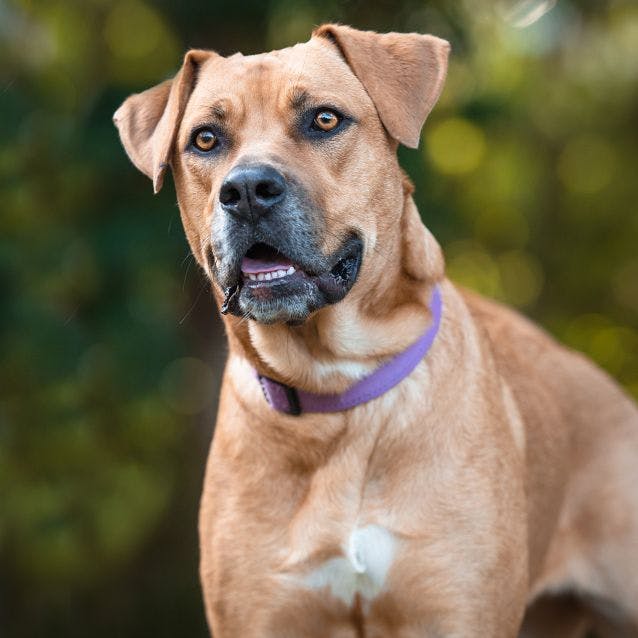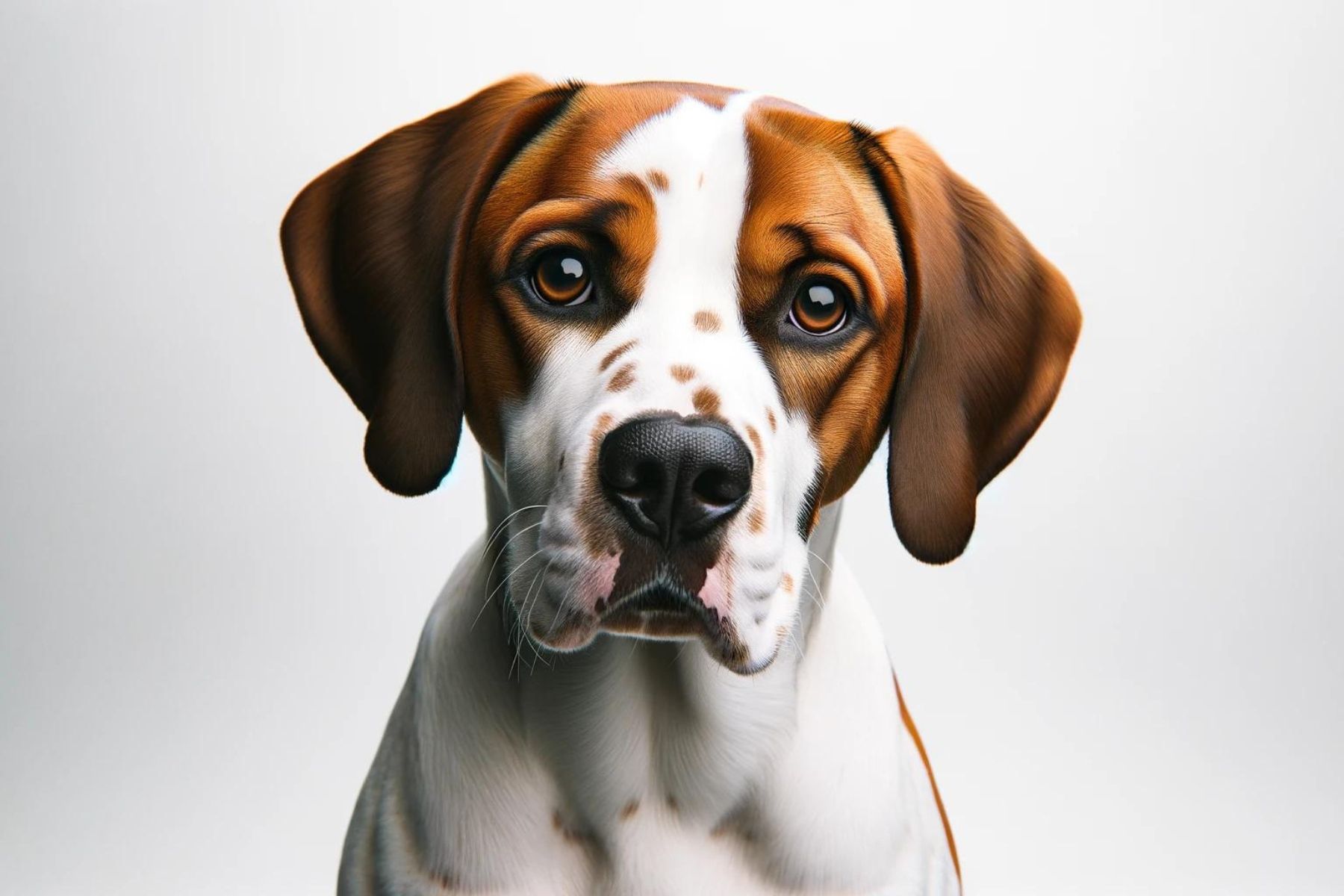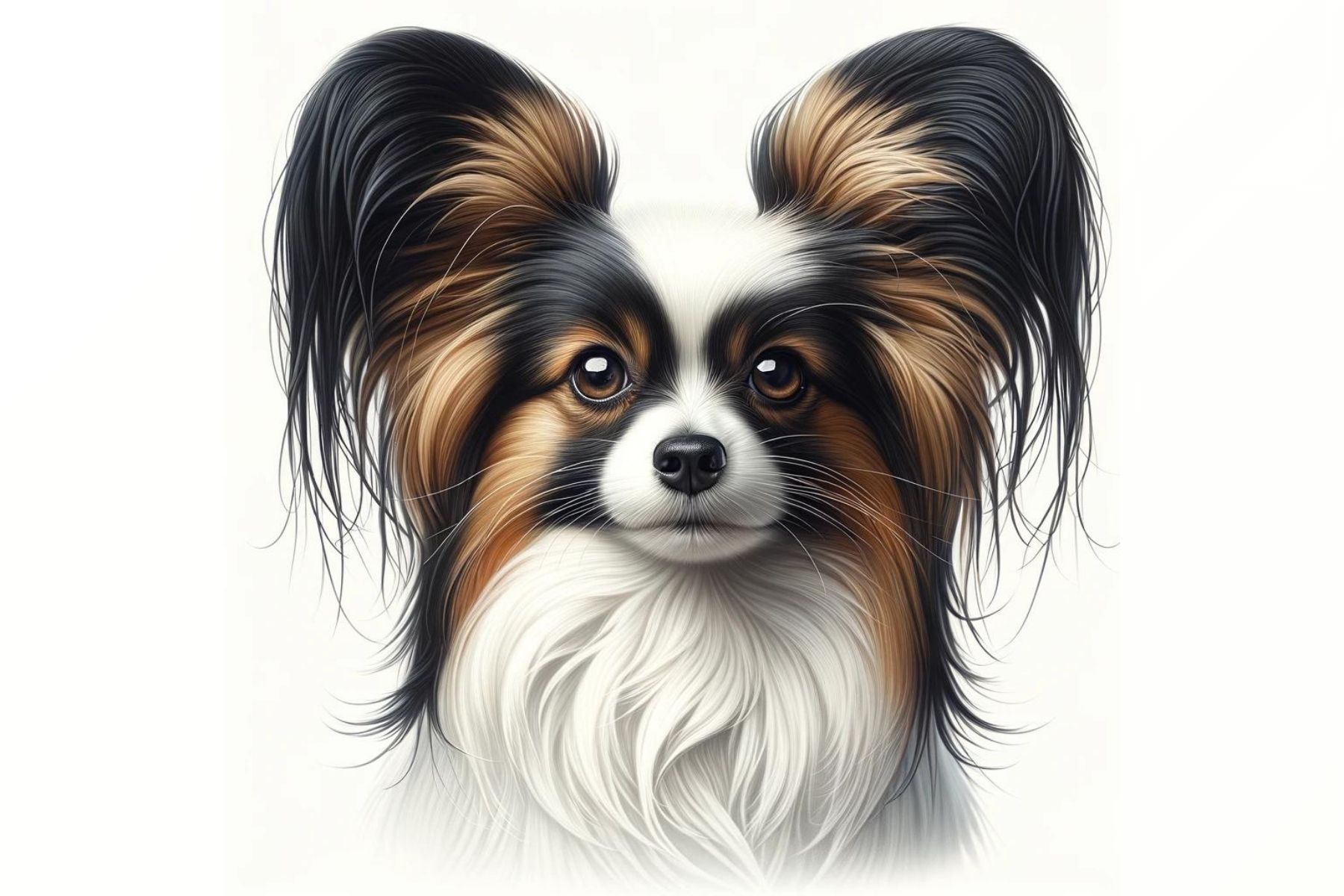Comparing the Rhodesian Ridgeback Lab Mix
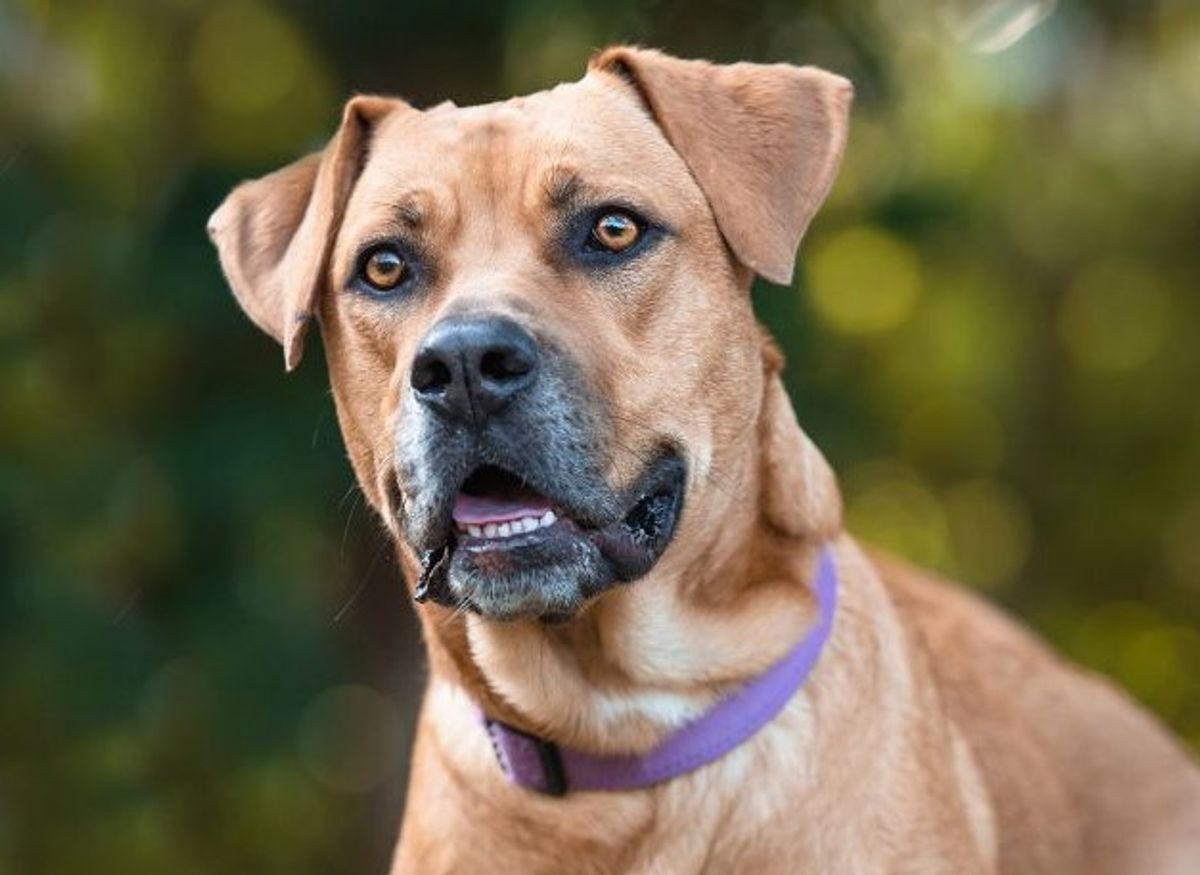
A Fabulous Cross Between The Rhodesian Ridgeback And The Labrador Retriever - Rhodesian Ridgeback lab mix
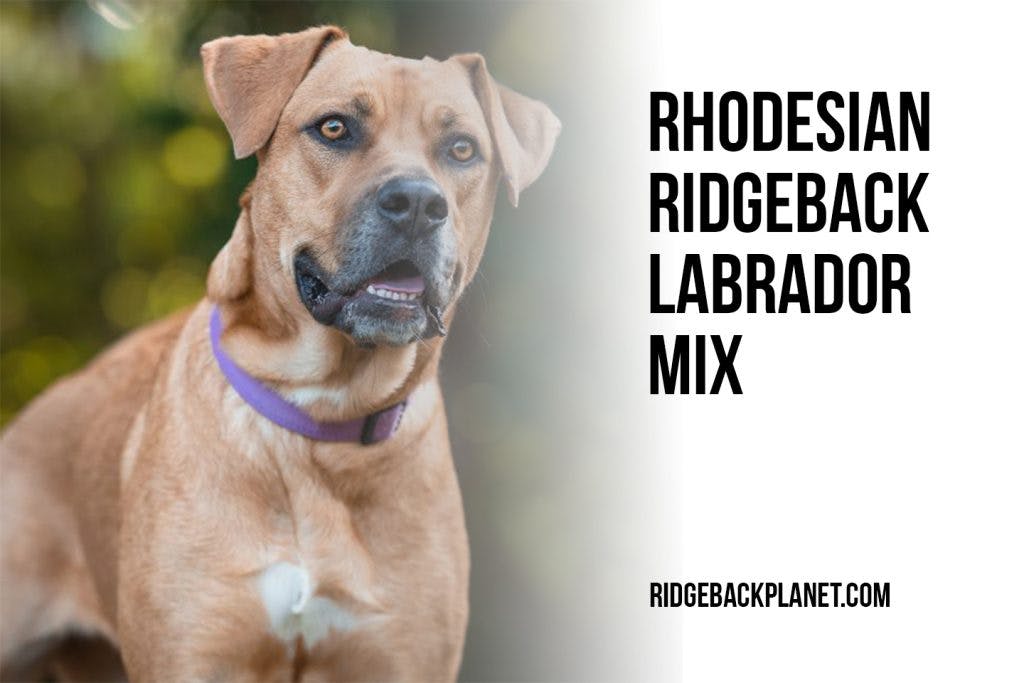
A Fabulous Cross Between The Rhodesian Ridgeback And The Labrador Retriever
Crossbred dogs, it needs to be stated, have been around for a long, long time, during which they have been incredibly popular with many owners. They are renowned for great qualities including loyalty, health, and friendliness, and come in a variety of shapes, colors, and sizes.
In recent years, however, a new trend in crossbreeds has grown to the point where it is the height of fashion. This is the trend to breed two different purebred dogs together, creating a new and exciting hybrid breed, commonly known as a designer dog.
The Rhodesian Labrador, or Labradesian, as it is sometimes known, is just one of these breeders creations, and one that is growing very quickly in popularity. This is not surprising since they are a mix of both breeds involved traits and appearance, creating an absolutely fantastic designer dog.
The Rise Of The Designer Dog
Before we can look closer at the Rhodesian Labrador, it would be useful to understand the craze of the designer dog and how and why it came about. Designer dogs have, as you are about to find out, their advantages and disadvantages that you will want to consider before deciding whether to get one.
Designer dogs, unlike most cross breeds, have parents that are both purebred. The decision to breed them is always conscious, and the intention is to create a specific hybrid dog. Breeds are chosen on the basis of producing a mix of certain temperaments and looks. There are no guarantees, however, what combination of these you will achieve.
Whilst not knowing exactly what traits you are going to conjure up by breeding two purebred dogs together may be a slight disadvantage of owning a designer dog, there is a huge advantage that truly outweighs it. This involves the highly important issue of canine health.
Conventional wisdom states that mixed breeds are consistently healthier than their purebred counterparts. This is because pure breeds are bred from the same gene pool, and a limited one, that often involves familial genes. Known as inbreeding this practice can lead to all sorts of health issues that can affect your beloved family pet.
Cross breeding to create a hybrid designer dog, on the other hand, allows the gene pools to open right up. Dogs that are used come from two entirely different gene pools meaning that recessive genes that carry health problems are buried. The result of this? A far healthier bred dog that requires fewer visits to the vets and lives a longer, happier life!
Whilst the Rhodesian Labrador is a relatively new addition to the designer dog family, and the success of breeding them for health purposes is relatively unknown, it has been known to succeed in other hybrid mixes. These include the Labradoodle (Labrador Retriever/Poodle), Cavachon (Cavalier King Charles Spaniel/Bichon Frise), Maltipoo (Maltese/Poodle), and Pomsky (Pomeranian/Siberian Husky).
A Brief Overview Of The Rhodesian Labrador
The Rhodesian Labrador is generally a good looking, gentle, loving, yet determinedly headstrong breed that makes the perfect family pet. They are large and energetic, share a strong bond with their humans, and can outplay even the most playful child.
Though they love being outdoors, and all activities outdoorsy, the Rhodesian Ridgeback is not an outside dog. Rather, they need to be tucked up inside sharing your treats and sofa, if allowed, and not outside in a kennel. They love nothing more, so be prepared, than to relax across your knee during quiet time.
Training brings out the best in the Rhodesian Labrador, so be ready to put some time and effort into doing this. Untrained, this breed may get a little on the domineering side, which you definitely do not want. Training needs to be firm but fair with the Rhodesian Labrador responding best to positive reinforcement.
You should also be aware that the Rhodesian Labrador is a protective breed of a dog that will be wary of strangers and may posture. This is not, however, this breed being aggressive, as they are not, rather they are simply warning the perceived threat away.
Finally, it is worth mentioning that if you are looking for a breed of a dog that can be registered as a pedigree with the American Kennel Club, then the Rhodesian Labrador is not that dog. This hybrid breed currently is not accepted by them as a breed of its own. It is, however, eligible to be registered with the DRA (Dog Registry Of America).
Meet The Two Breeds That Make The Rhodesian Labrador
Before you consider adding a Rhodesian Labrador to your family, it makes sense to have a look at the two breeds separately. This is because, as we have already stated, the hybrid that is the Rhodesian Labrador can be a mix of any, all of, or even none of their individual traits. Studying both breeds on their own, to put it simply, is a great way to see what you ‘might’ be getting.
The Rhodesian Ridgeback
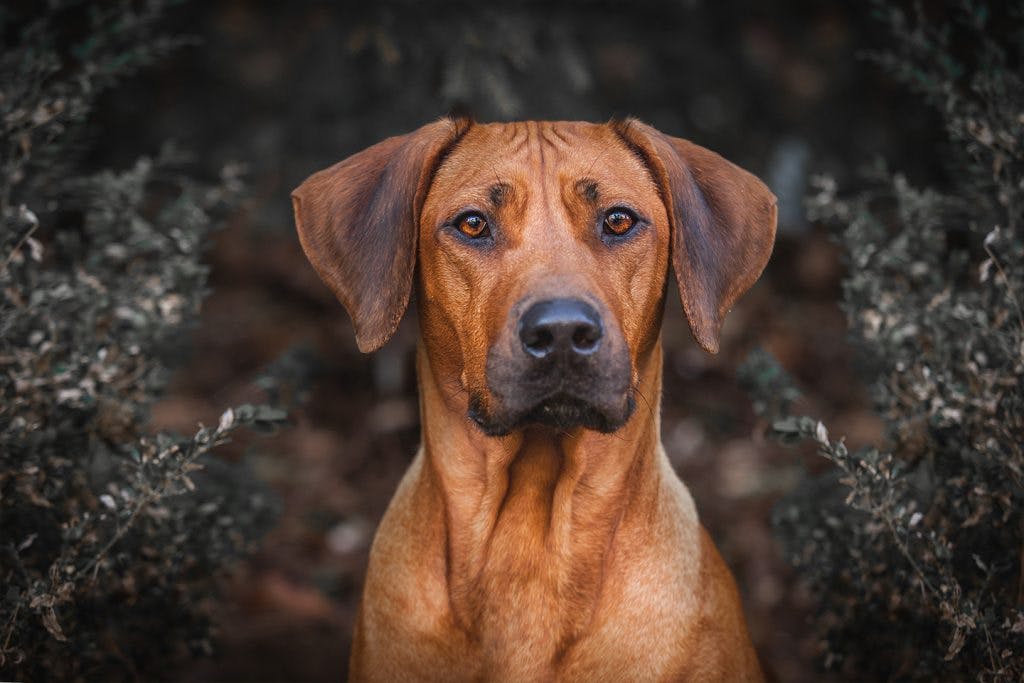
A true working dog that has been used to hunt and retrieve game, protect the family, and property, the Rhodesian Ridgeback is a refined crossbreed in itself. It was established in the early 16th century when dogs of the Boer settlers were bred with tribe dogs such as the Khoikhoi, Mastiff, Deerhound, and Great Dane.
A couple of centuries later, in 1877, the Reverend Helm brought two of these wonderful dogs to Matabeleland. Here, people soon learned of their prowess when it came to being used as hunting dogs, and began to use them themselves. This caused the birth of the name Van Rooyen’s Lion Dog and gave them their notoriety as lion killers.
As we now know, lion killer is not strictly true as though the Rhodesian Ridgeback was indeed used to hunt lions, they never actually killed them. Rather, they hunted lion down, cornering them until their owner could catch up and deal with them.
This bravery added to the loyalty that the Rhodesian Ridgeback displayed soon made them a highly trusted and highly prized companion. They were imported to the USA in 1950 as such and became recognized as a breed by the American Kennel Club in 1955.
The Rhodesian Ridgeback is, according to the kennel club, a fast and powerful athlete that is a whole lot of a hound! They are described as faithful friends who are protective of loved ones, and full of affection and love. They are also, on the other hand, strong-willed and independent, needing firm but fair training. They can be domineering if they are allowed to be, so need a strong-willed owner.
Looks wise, the Rhodesian Ridgeback is described as standing at between 25 to 27 inches if male and 24 to 26 inches if female. They can weigh in at up to 85 lb. Color wise, there is only one which the Rhodesian Ridgeback comes in and it is described as wheaten. This, however, can be of varying shades from pale flaxen to burnished red. The Rhodesian Ridgeback is listed by the American Kennel Club as the 42nd most popular breed of the clubs 193.
The Labrador Retriever
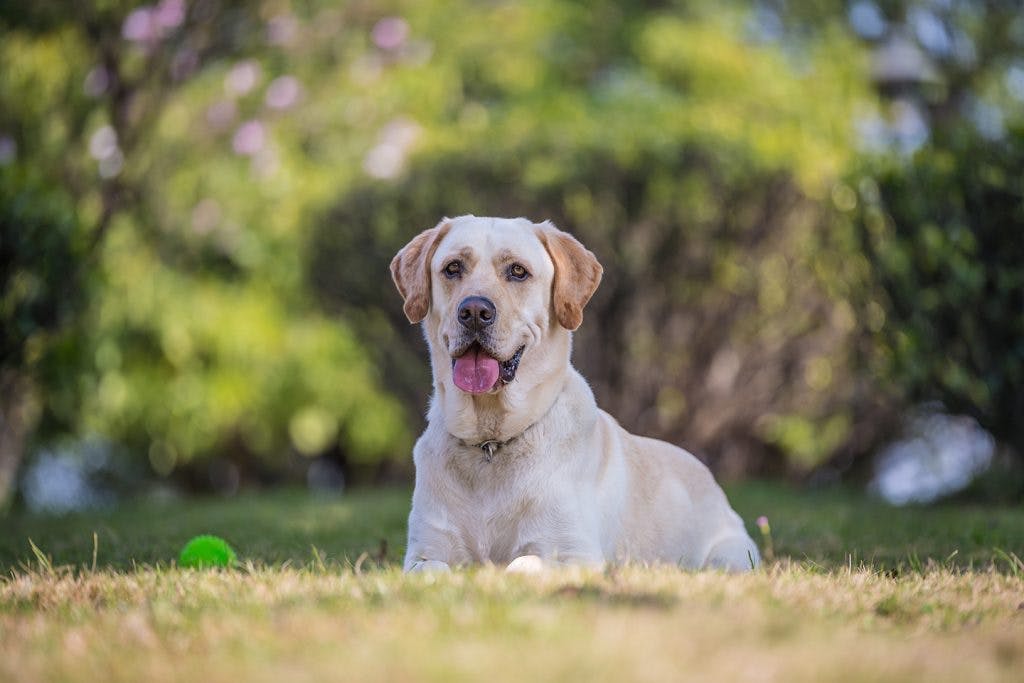
Classed as one of the most popular breeds in all of America, the Labrador Retriever originated from Newfoundland, an Easterly province of Canada. Here they would be used by a fisherman to help catch fish that came loose from their nets or to jump into the freezing cold water and help pull the nets out.
In the 1800s, English ships brought the Labrador Retriever to England where they were bred with Spaniels, Setters, and other types of Retriever to enhance the breeds instinct for hunting. This was highly successful and the Labrador Retriever we know today was born.
Regarded as incredibly easy to train, and renowned for their hunting and retrieving ability the Labrador Retriever has developed over the years into much more than a hunting dog. Today they are also used for drug detection work, police work, guide work for the blind, sledding and carting, and search and rescue.
According to the American Kennel Club, within which it ranks at number 1 for popularity out of 193 breeds, the Labrador Retriever is a sturdy and well-balanced breed with a dense and hard coat. This coat comes in a glorious array of colors from yellow to black, and luscious chocolate, with the glorious fox red and silver being, also included but not recognized specifically.
Standing at up to 24.5 inches for males and 23.5 inches for females, the Labrador Retriever can weigh in at up to 80 lb. They are classified as a sporting dog by the American Kennel Club but appear at Crufts as a gun dog. Technically, they are both with sporting just being another way to describe the gundog group.
Personality wise, Labrador Retrievers are great big bundles of love that will bond with the whole family and always greet you with a wagging tail and smile. They make great and loving companions who socialize well with humans and other dogs alike. Quite the keen athletes also, Labrador Retrievers love to run and swim. Marathon games of fetch will be on the cards for anyone who invites this breed into their home.
The Rhodesian Labrador – Appearance
Though there are no guarantees, the Rhodesian Labrador is highly likely to be long and leggy with a svelte and athletic body. The chest is deep and supports a solid neck and fine elegant head. The top of the head is rounded slightly in shape with an indent often being present between the eyes.
The eyes themselves are always bright, alert, and full of curiosity and character. They are a rich deep amber or a darkish brown in color with a rounded shape and a dark rim to them.
Beneath the eyes, the muzzle is long and pointed and ends in a nose that is always black. The mouth of the Rhodesian Labrador has a black rim to it and teeth that meet in a neat scissor bite. Ears are set wide apart on this hybrid breed and almost frame the head.
At the other end of the Rhodesian Labradors body, a long tail completes the design of this handsome breed with its elegant stance. Well, almost that is! The Rhodesian Labrador comes in a variety of medium length straight coat colors such as fawn, black, Isabella (silvery fawn), brown, sable (dark brown/black), and red.
The Rhodesian Labrador – Temperament
Unlike appearance, which can vary in the Rhodesian Labrador, temperament is a little more certain. This is mainly due to both the breeds involved in this hybrid being similar in personality and behavior. Both, for example, are calm and confident, and both are loving and loyal.
Where the Labrador Retriever and Rhodesian Ridgeback do differ is in the tendency to be stubborn and possibly domineering. This is not a trait that the Labrador often displays, rather it is the domain of the Rhodesian Ridgeback. This trait makes them harder to train, but not impossible, it just takes hard work and the ability to be firm but fair. The Rhodesian Labrador usually inherits this trait.
Calm indoors and energetic outdoors the Rhodesian Labrador is the ideal family pet. They love children and will play fetch with them all day long, often outplaying the child. They are also protective of those they love, but never aggressive. They may, however, posture and bark in the presence of those they see as a threat to their family, but they will not attack.
The calm nature of the Rhodesian Labrador means that even though they are a large dog, they can adapt quite well to apartment living. They will, however, need frequent exercise such as walks to prevent them from becoming a destructive force within your home. A bored Rhodesian Labrador will not think twice about chewing shoes, furniture, rugs, and anything else left around that they shouldn’t.
As Rhodesian Ridgebacks and Labrador Retrievers come from a hunting background, the Rhodesian Labrador may inherit the prey instinct. This means they could be prone to chasing small animals and squaring up to other dogs. Good training with socialization at an early age should take care of this trait, but it pays to keep your Rhodesian Labrador on a leash until you are sure they will not chase.
Overall, the Rhodesian Labrador could be described as a big dog that has a heart that is even bigger! They are loyal, loving, playful, intelligent, affectionate, and make a fantastic family pet.
Rhodesian Labrador – Maintenance
Putting it simply the Rhodesian Labrador is incredibly easy to care for and requires very little maintenance. They have no special requirements that will take up lots of your time. Time wise, all in all, care for your Rhodesian Labrador should take up a little more than an hour per week.
A moderate shedding breed the Rhodesian Labrador requires a thorough brushing on a weekly basis. This should be done with a stiff bristled brush or a product like the Furminator. This will remove any loose fur, including the undercoat that is inherited from the Labrador Retriever.
You may also need to occasionally clip your Rhodesian Labradors claws. This should be done from an early age to ensure that your Rhodesian Labrador can become used to it so that it doesn’t stress them out. Due to not always being able to tell where the vein is in the claw, many owners choose to use a groomer or their veterinary clinic to perform this task.
With their large floppy ears, the Rhodesian Labrador is especially prone to ear infections. Because of this regular cleansing of the ears is recommended. This can usually be done with simple ear cleansing wipes, but if you notice a dirt buildup ear cleansing liquids are also widely available. Be aware if the ear looks inflamed and/or has a bad odor you will need to consult your vet.
Bathing is not a regular necessity when it comes to a Rhodesian Labrador and should only be done when they are really dirty. If you need to bathe them make sure you use a gentle dog-specific shampoo and ensure you thoroughly rinse.
Finally, teeth cleaning is a care activity you should be performing on a weekly basis. Do not rely on teeth cleansing treats to do this job for you. Dog toothbrushes and toothpaste are widely available and as with any care regime, you should start performing this task from an early age. Special puppy brushes that are slipped on to your fingers can be purchased to help you accustom your Rhodesian Labrador to this task.
Rhodesian Labrador – Activity Requirements
Rhodesian Labradors have a lot of energy and require the time and opportunity for them to expel this. They should be walking for at least 12 miles a week and be participating in 2 hours activity a day. This doesn’t all have to be done pounding the pavements, there are plenty of other ways to exercise your Rhodesian Labrador.
Agility, fetch, chase, and even training sessions are all excellent ways to give your Rhodesian Labrador the exercise they need. As mentioned before, this breed loves to play all manner of games, especially the one called fetch! They are also intelligent enough that sports like agility will be a breeze for them.
It is worth noting that, also as pre-mentioned, the Rhodesian Labrador can have a high prey drive meaning they will chase after small animals, and possibly other dogs. When doing this they will also not always be responsive to recall. For this reason, it is a good idea to keep your Rhodesian Labrador on a leash whilst in public places. Extending leads are perfect for this breed as they mean your dog can have a range of up to around 8 meters away from you whilst still being under your control.
Rhodesian Labrador – Food Consumption
The Rhodesian Labrador is a breed that just loves their food and will eat virtually anything that is offered to them. It is, however, worth remembering that this breed also puts on weight very easily and can become obese quite quick.
Fully grown Rhodesian Labradors should be eating around 2.5 cups of a high-quality food per day. Any treats given should be accounted for by feeding smaller meals. Feeding times are best spread out throughout the day, say three meals a day, to ensure they burn off the calories they are in taking.
Please note Rhodesian Labradors do make excellent food thieves and are of a size that food simply placed on a counter will not be out of their reach. Make sure any food, that you do not want them getting, is secure and safe from stealthy paws.
Rhodesian Labrador – Health
As with all breeds of dog, the Rhodesian Labrador is more prone to certain illnesses than others, and this should be taken into account before making the decision to own one. Rhodesian Labrador major health concerns are canine hip and joint dysplasia, hyperthyroidism, and gastric dilation volvulus, commonly known as GDV.
Canine hip and joint dysplasia – This is an abnormal formation of usually the hip, or less commonly elbow socket. In its more severe form, it can lead to crippling lameness and painful arthritis of the joints. It is more common in larger dog breeds and there is no complete cure. It can, however, be treated with painkillers and anti-inflammatories, and sometimes if suitable surgery.
Hyperthyroidism – This health concern occurs when your Rhodesian Labradors body produces too much of the thyroid hormone. In turn, this increases your dog’s metabolic rate to potentially dangerous levels. Symptoms include lethargy, exercise intolerance, mental dullness, weight gain, obesity, and an intolerance to the cold. It is, however, treatable with Thyroxine which will offset your Rhodesian Labradors low thyroid function.
Gastric Dilation Volvulus (GDV) – A rapidly progressing and life-threatening condition that is commonly associated with feeding your Rhodesian Labrador large meals. This in turn causes the stomach to dilate, because of food and gas, and can get to the point whether neither is expelled. The stomach will then expand and dilate causing a pressure buildup which can be fatal. Surgery is needed for this condition.
Whilst the above may all sound really scary, they are certainly not common occurrences with the Rhodesian Labrador. They are, however, conditions you should be aware of and prepared to deal with should the need arise.
Other conditions that may affect your Rhodesian Labrador but that would be minor concerns are ear infections and glaucoma.
Ear Infections – As already mentioned in the care section, Rhodesian Labradors are prone to getting dirty ears which can become infected. This is usually due to bacteria and yeast growth and symptoms of infection include redness, a bad odor, and swelling. You may also find your Rhodesian Labrador trying to paw at their ears in an effort to clean them or frequently shaking their head. This is an indication that the infection has become painful and that you should seek veterinary help.
Glaucoma – This is a disease of the optic nerve in which pressure is placed on the eye. If left without treatment, this condition can become chronic causing permanent damage such as blindness. Treatment varies including drugs or the possible draining of excess fluid.
It is worth mentioning here that annual checkups for your Rhodesian Labrador are a really good idea. These can be done at the same time as their yearly vaccinations. In fact, many veterinarians offer packages that include both vaccinations and a checkup that are usually exceptionally well priced.
Rhodesian Labrador – Puppies
As a puppy, the Rhodesian Labrador will be highly energetic and love to actively play for which they need lots of safe space. This should take the form of a well-enclosed garden from which they cannot escape, or a leash being on them when out in public. It is worth noting that due to possible joint injuries, which we have covered above, that the Rhodesian Labrador puppy should take frequent but short walks.
Rhodesian Labrador puppies should be fed a high-quality suitable food so that they grow healthy and do not become obese. As a guide, the weight of your puppy at 6 months old should be no more than 23 lb, and at 12 month 40lb. A good diet should cost you no more than $50 per month.
Like any other breed, pure or hybrid, you should always research possible Rhodesian Labrador breeders carefully. Visit the homes where the puppies are living, and insist on seeing both Mum and Dad. Watch how the breeder interacts with the puppies and how the puppies respond to them.
The cost of a Rhodesian Labrador will vary but a rough guide would be $750 – 1000. As always anything much cheaper than this you should avoid at all costs. This is because it may be a good indication that the breeder may be running a puppy mill.

